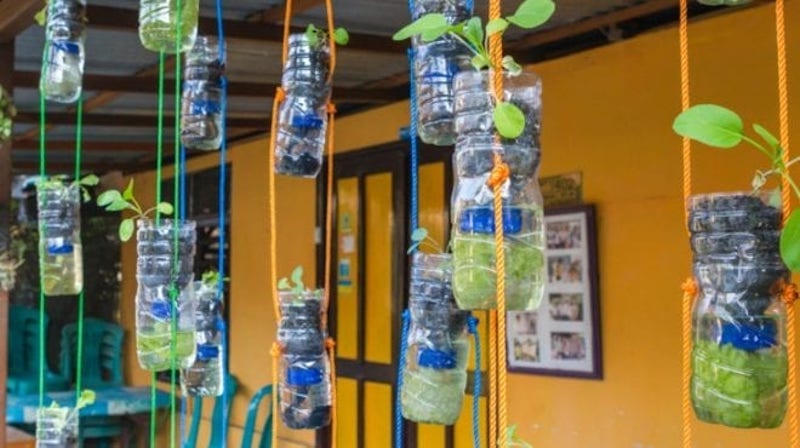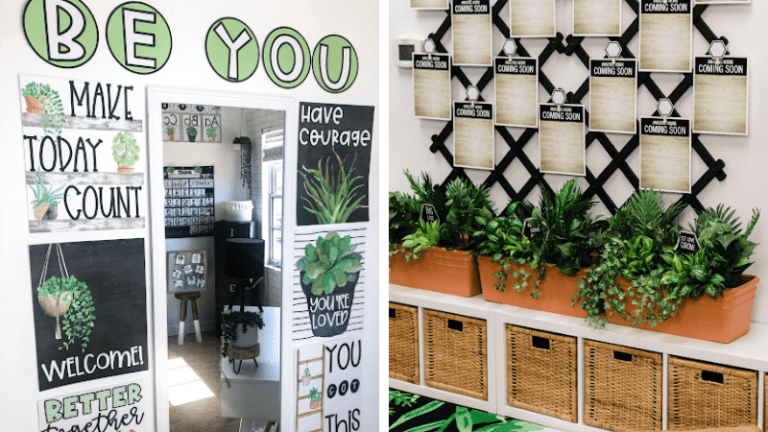As an educator, there are so many things you can do to make your classroom and school more green. From recycling to planting gardens to powering your school with solar panels to getting a green seal, the ideas are endless. Plus teaching students about green practices now creates a lifelong interest in saving the planet. These ideas help lay the groundwork for a green school and classroom. What will you start today?
1. Lead a green club

Find students who are interested in making their school more eco-friendly. Help them set a small goal to get started and then encourage them to think of more big picture ideas. Use these tips for success.
2. Hold a recycling bin decorating contest
Get the whole school involved in sprucing up the recycling bins. Task each class with decorating their containers or making their own from scratch. Put them on display and have students vote for their favorites!
3. Apply for grants
Find and apply for grants that offer financial support for green-school initiatives. Here are some garden grants to get you started, but there are lots of other opportunities out there.
4. Get creative with recycling bins
Go beyond the basic blue bucket and make your receptacle stand out. Try this hungry recycle monster. Or keep things super organized with a recycling station, complete with colorful bins clearly labeled for paper, plastic bottles, cans, and cardboard. The easier and more fun recycling is, the more students (and staff) will want to join in.
5. Schedule a trash pickup day
Make it an annual, monthly, or weekly event. Getting outside to see, firsthand, how much trash ends up on the ground helps students become more aware of where they’re putting their litter.
6. Add indoor plants
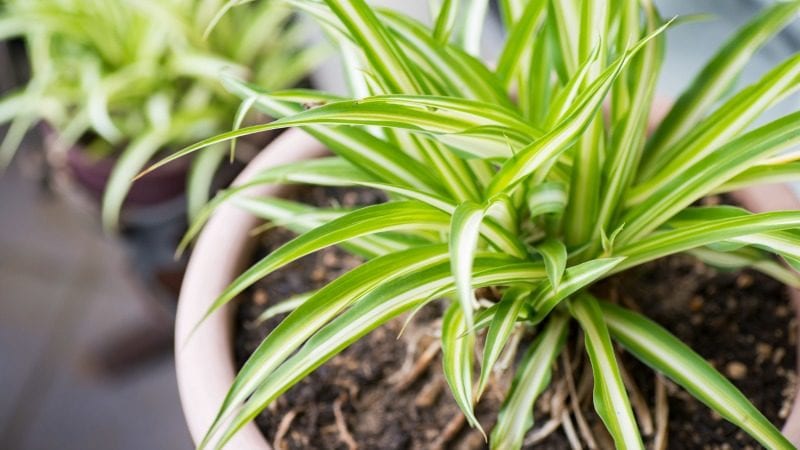
Studies show that indoor plants naturally purify the air and provide health benefits, like fewer cold symptoms and improved behavior. Start with easy-to-grow plants, like a spider plant, snake plant, jade, English ivy, or golden pothos. Get kids involved in the plant care and nurture mini gardeners.
7. Rally for solar panels
Yes, this is a pricey way to become a green school, but it’s one that pays off. According to EnergySage, solar is the cheapest energy source and saves a ton of money. Plus schools typically have flat roofs, which are a natural fit for solar panels. Do some research and get your administration on board!
8. Get dirty and do a waste audit
Hand out some rubber gloves and let students dig in! Dump trash cans onto a tarp to see just how many recyclables were doomed for the landfill. Tally up all of the misplaced items and communicate the total to the entire school. You can use this waste audit here. Conduct another audit in a month or two and see if your numbers improve.
9. Track your progress
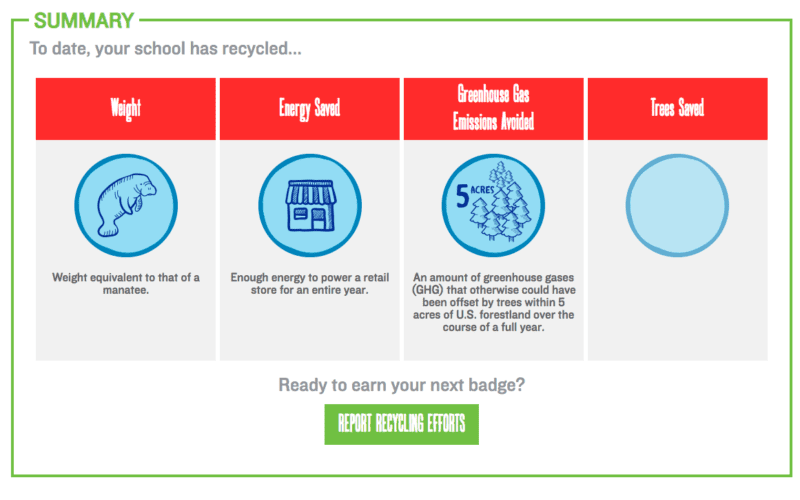
Monitor your school’s recycling impact when you sign up for Recycle Rally. It’s an easy way to set goals and see all of your efforts in one place.
10. Improve air quality
A comfortable, healthy, and safe environment is so important. Old schools with out-of-date ventilation may cause problems. Launch a campaign to improve air quality with tips from the Environmental Protection Agency’s Action Kit.
11. Clean with natural, environmentally friendly products
Start by cleaning with green products in your own classroom. Here’s an article from the EPA to help give you a rundown of what to look for. In particular, read the labels and be aware of any of them that have big cautions or warnings. This is a sign that they might have harmful ingredients. But rally other teachers and administration to take a close look at the products they’re using school-wide, from how they clean the cafeteria tables to the gym floors.
12. Turn recyclables into an obstacle course
13. Rally for the use of reusable containers for lunches
Between sandwiches, snacks, and leftovers, that’s a lot of plastic at lunchtime. Glass or stainless steel containers come in all sizes and are perfect for school meals. Challenge students to start using them.
14. Make yours a zero-waste classroom
If this seems a little extreme, start slow. Maybe try for a zero-waste day or week just to test the waters. If you make it a fun challenge with a little reward, the kids will totally get on board.
15. Grow a garden

Find a small space on school grounds for a garden. Get students involved from the very start—let them choose the plot. Turn it into a teaching moment and have them determine the best spot based on light needs and soil type. Grow veggies and let kids experience how easy it is to grow their own food.
16. Do an energy audit
Analyze and improve your classroom’s energy use. Ask students to brainstorm easy ways to cut back, such as turning off computers every night.
17. Survey students to see what causes they care about most
Whether it’s recycling, installing energy-efficient lighting, or switching to earth-friendly cleaning products, find out what students and their parents care about most. Send out a quick survey.
18. Encourage walking or biking to school
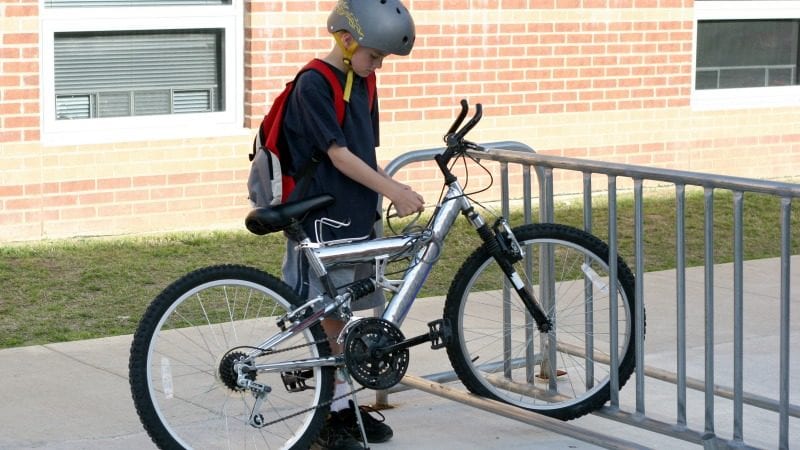
Designate a day, maybe near the beginning of the school year, to encourage students to find green ways to get to school, whether it’s walking, biking, or riding a scooter. Doing it early in the year might make kids fall in love with the mode of transportation and stick with it for the whole year.
19. Take a pledge
Have students take a pledge to commit to recycling, reducing waste, and saving energy. Putting it writing and displaying the pledges in a high-traffic area at school helps kids remember to take it seriously.
20. Start composting
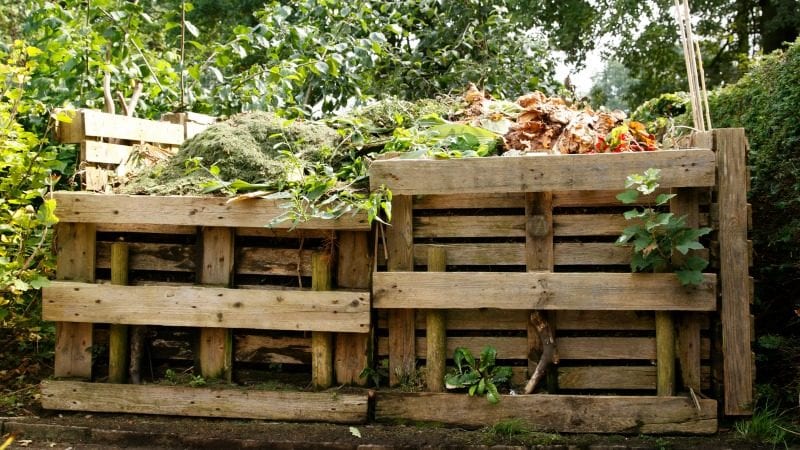
Eliminate food waste by adding a compost bin to your classroom or cafeteria. Food scraps don’t require anything fancy—a five-gallon bucket, small pail, or a wooden crate work just fine. Create a compost team that is responsible for transporting the scraps to a bigger bin outdoors every day.
21. Plant a rain garden
A garden filled with native perennials designed to capture runoff rainwater and recycle it back into the ground is super beneficial to the environment. It also reduces pollution and preserves the sewer systems. Use these lesson plans to get students involved.
22. Install rain barrels
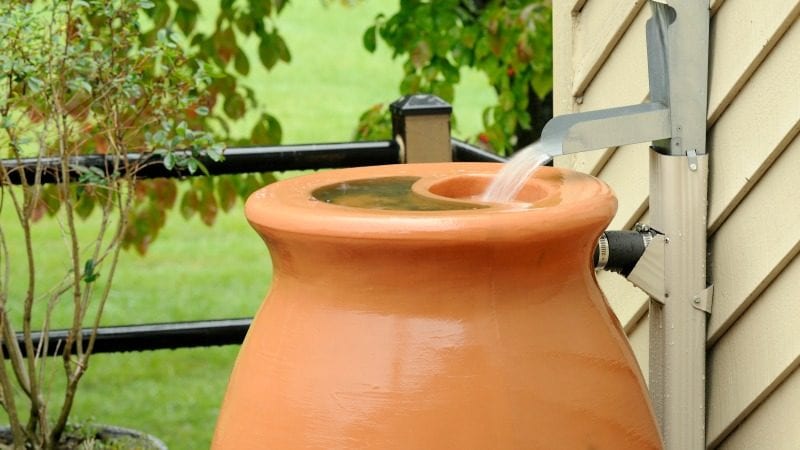
Catch rainwater to feed your school garden. Reusing the water reduces the amount of water that ends up in the sewer system, plus the fresh water is better for the plants. You can also add the water you collect to your compost pile.
23. Use supplies year after year
Reuse last year’s supplies. Set out a box on clean-out day and ask students and parents to throw unwanted items like half-used crayons, colored pencils, and notebooks in it. Either utilize them next school year or donate them.
24. Help students understand WHY recycling is important
Sure, you can ask kids to toss their plastic bottles in the blue bins, but until they fully grasp the benefit, it’ll seem like a chore. Turn the hows and whys of recycling into a lesson plan to make it stick.
25. Visit a recycling center or landfill

Go on a field trip to a recycling center or landfill. The landfill visit helps students see how much trash is collected. And a recycling center trip shows how their efforts pay off.
26. Use eco-friendly craft supplies
From recycled dry-erase markers to construction paper, the possibilities for earth-friendly school supplies are endless. Use this roundup to see what’s out there.
27. Educate students, parents, and administrators about sustainability
Pull together stats and information to help everyone realize how beneficial a green school can be. Let everyone know the impact an entire school can make on the environment.
28. Add more recycling bins
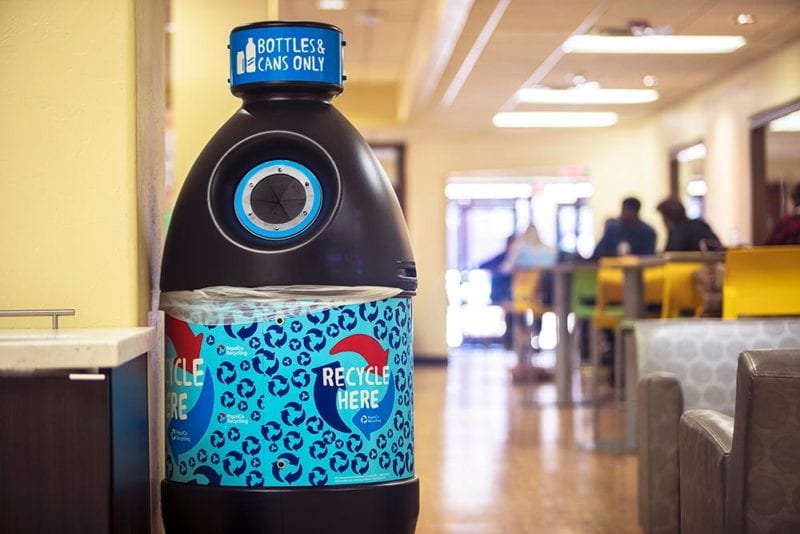
It sounds obvious, but it’s often overlooked. Simply add more bins, especially near every trash can, and clearly label them. Make it really easy for students to toss the right stuff into the right bin.
29. Play movies with environmental themes
There are plenty of movies that educate kids about environmental issues in a fun way—they won’t even realize they’re learning. You can also find informative clips on YouTube if you don’t have the ability or time to show a full movie.
30. Make your own glue
All you need is a few kitchen ingredients, such as vinegar, powdered dry milk, and baking soda, to whip up a batch of non-toxic glue.
31. Use recyclables for art projects
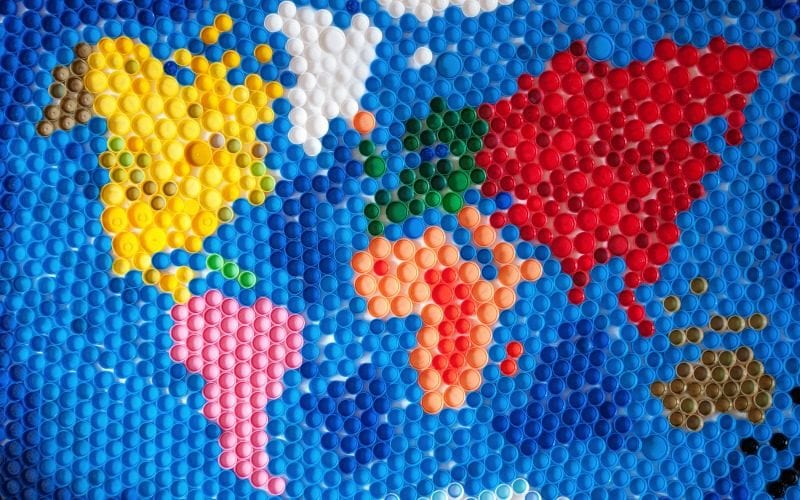
From unwanted paper to tin cans to bottle caps, the project possibilities are endless. Create a plastic bottle mural in your classroom or in a place where the whole school can enjoy it. Bonus points if you make your mural’s message related to recycling!
32. Add green-focused books to the reading list
Help kids learn about the importance of sustainability with books for all ages, including teens.
33. Make recycling a game
From bottle bowling to a recyclables scavenger hunt, it’s easy to bring awareness to recycling with a fun and active event. Use these kid-friendly ideas to get started. You can also get inspiration from this trick-shot teacher.
34. Help kids become recycling champions
Share your ideas and successes with other green schools in your area. Better yet, let students put together presentations about the biggest lessons and wins at your school. Spreading sustainability love benefits the entire community.
35. Rely on natural light

Keep blinds and shades open to let the vitamin D in. Natural light leads to higher productivity and improves overall mood—for students and teachers! Plus the light offers a little extra heat on those chilly days.
36. Aim for an official honor
Everything from floor cleaner to hand soap can be switched out for earth-friendly products. Analyze what your school currently uses and help make changes. Eventually, get your school Green Seal certified! Project Green Schools is another good one to look into.
37. Write an environmental vision statement
Include the hows and whys and then share it with students, parents, and even the school board. The more support you can drum up, the better the outcome.
38. Reuse in creative ways

Kids are creative thinkers when it comes to reusing materials. In this idea, you can wrangle up a bunch of plastic bottles and have kids turn them into plant containers to hang around the classroom. You’re giving old bottles a new life and adding all of the health benefits of plants. Ask your students what else they can come up with, too.
39. Host a solar cookout
Have students build their own sun ovens and try to cook some food using the sun! This is a fun, hands-on science lesson that students will remember for years to come. You can easily find good sun oven plans on Pinterest.
40. Communicate your success
Everyone is motivated by victory, so don’t shy away from bragging about progress whenever possible—the weekly newsletter, school assemblies, social media, or however your school communicates. Excitement is contagious, so the more you can get people talking about positive changes, the better.
41. Celebrate environmental holidays
There are so many to choose from! Bike to School Day happens every year in early May, America Recycles Day (part of the Keep America Beautiful program) is on or around November 15, and the Great American Cleanup (also part of the Keep America Beautiful program) usually happens on the first day of spring. A quick Google search will bring up a ton more! The video above is a collaboration between PepsiCo Recycling and WeAreTeachers from last year to celebrate America Recycles Day.
42. Team up with local green companies
Find organizations or businesses in your community that have the same green goals. They can help educate you and the students, offering up new ideas and assisting you with execution.
43. Replace light bulbs

Old schools may have old light fixtures, so rally to get them updated. New lighting or better bulbs save energy. Bonus: Remember to turn the lights off when you’re not in the room.
44. Celebrate your progress (in an eco-friendly way, of course)
Once you’ve met your recycling and sustainability goals for the year, find a creative way to celebrate the achievement and reward students for their efforts. Give these recycled-bottle trophies to kids who made the most impact.

